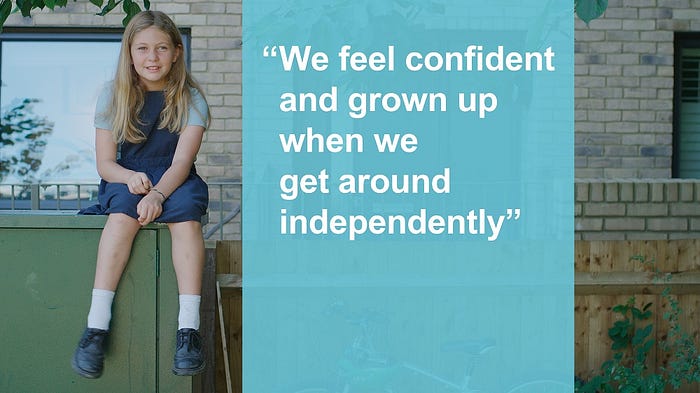Our streets, our journeys
Rachel Toms, an expert on the built environment and health, and board member for the London’s Child Obesity Taskforce, spells out the benefits of improving streets for active journeys like walking and cycling.

Rachel's article is at medium.com/@Londonchildobesity/our-streets-our-journeys-9f949680f9d7.
Some quotations from the article:
"It was fascinating to hear so many kids say they enjoy cycling because they like the wind on their face. None of them said they like exhaust fumes on their face."
"TfL’s analysis has found that ... around a quarter of current car trips could be walked, and two thirds could be cycled. They found unmet potential for cycling growth ... particularly in outer London."
"The bad news is that 61% of adult Brits feel it’s too dangerous for them to cycle on the roads."
"The good news is that YouGov research found that British adults are overwhelmingly in favour of their local streets being redesigned and changed to encourage walking and cycling, with 6.5 people in favour for every 1 person against — although those against tend to be extremely vocal."
"Active journeys like walking, scooting and cycling are in another league for air quality compared with journeys by any type of car."

"No-one likes traffic noise and with good reason: it can adversely affect your sleep, your stress level and your mental health."
"Not doing enough physical activity — which is the case for at least 40% of Londoners — puts people at much higher risk of many health problems, from fractures to depression and dementia, and from cancer to type 2 diabetes and heart disease."
"Data from TfL shows that in areas where intensive street improvements have been made, the average resident now walks, scoots or cycles for over 40 minutes a week more than before."
"For every £1 spent on walking and cycling, there are £13 of benefits returned to the economy, leading the Government to conclude that this type of investment offers 'high or very high value for money'."
"It’s not okay when a three-year-old and her dad need to cross the street and are shown a green man but have to weave their way between the bumpers and exhaust pipes of cars and vans that have stopped on the crossing — because of the design of the junction and signals, and because of what ‘feels right’ to motorists."




